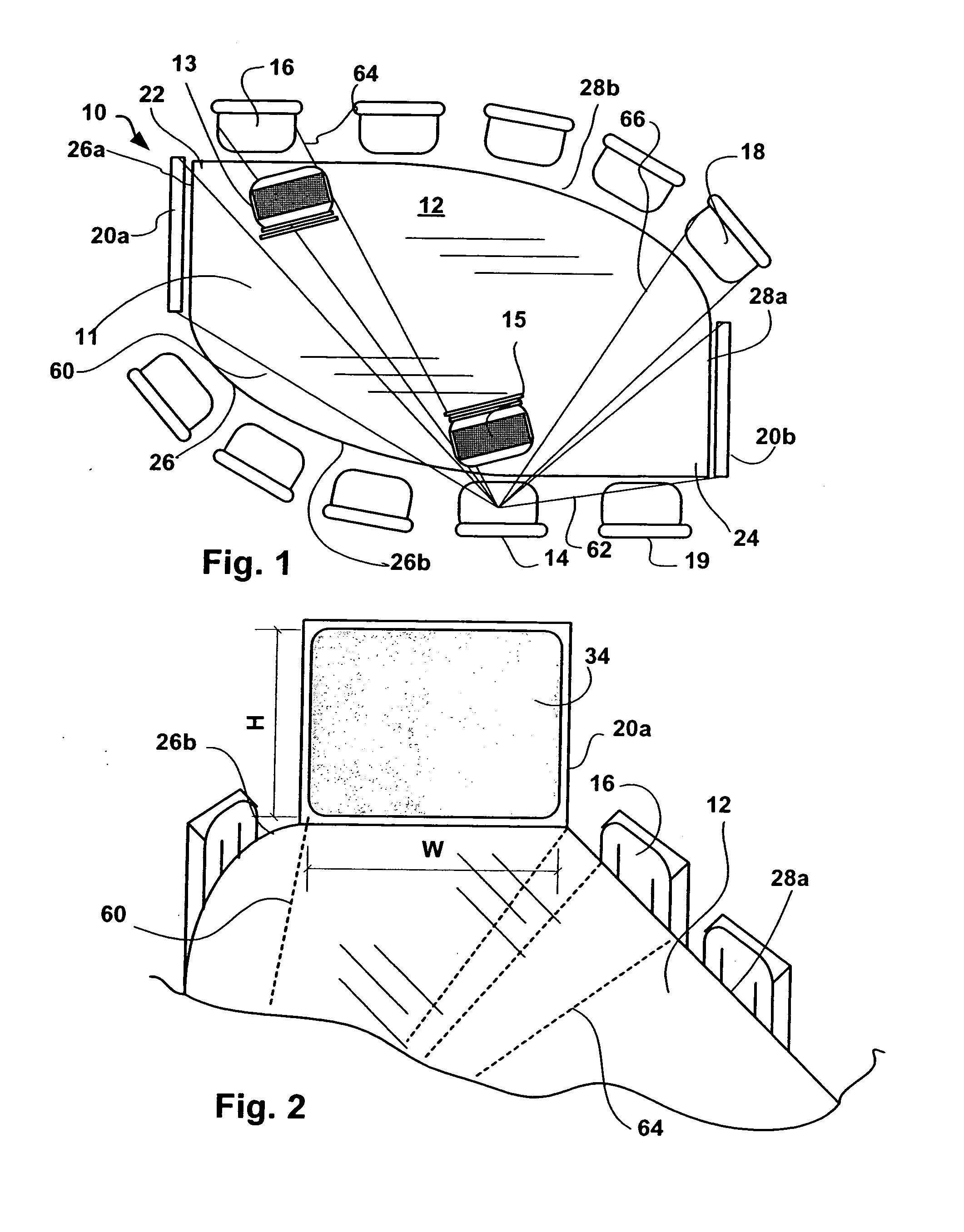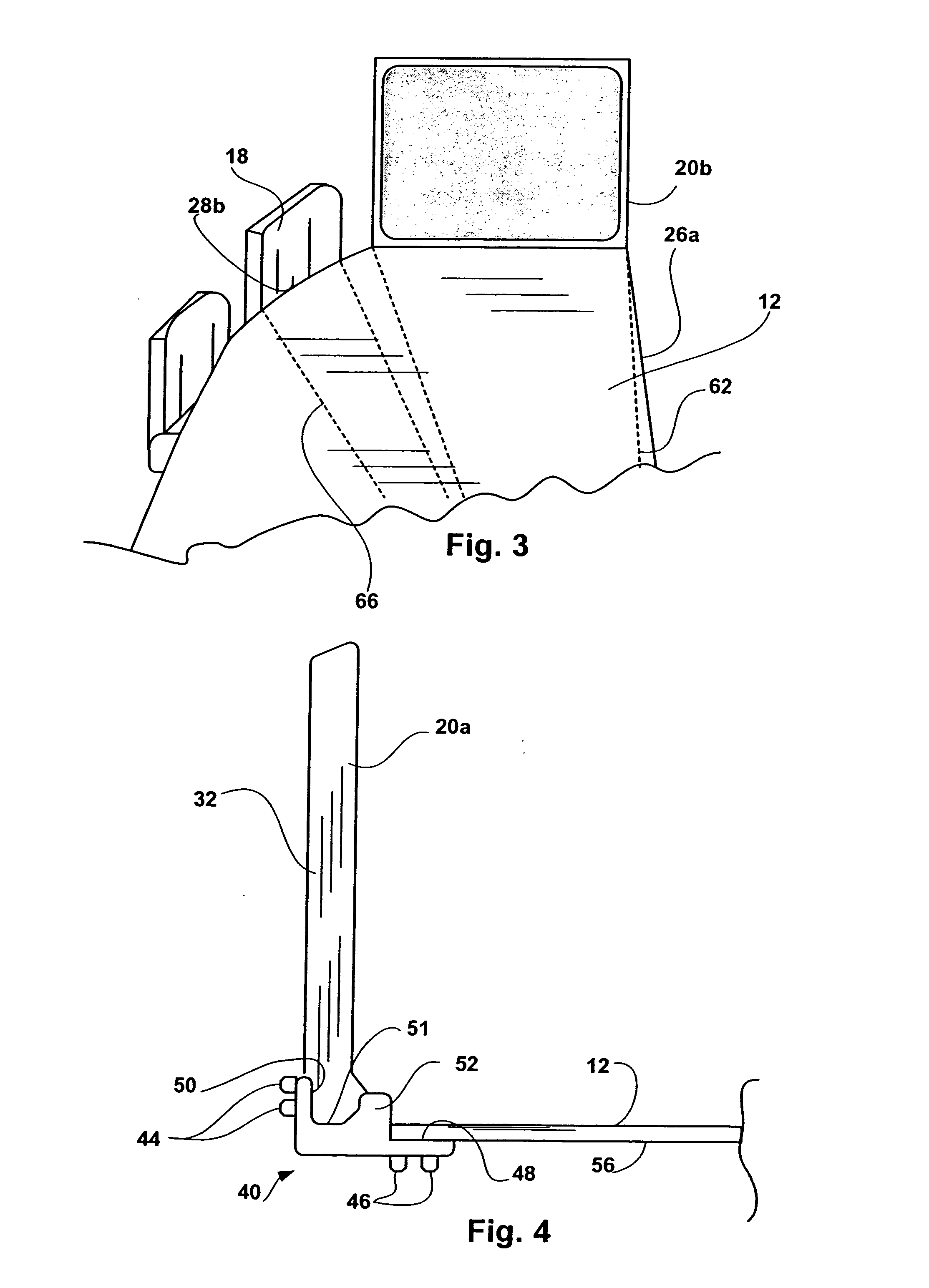Multi-use conferencing space, table arrangement and display configuration
a multi-use, conferencing space technology, applied in the field of space, table configuration and display configuration, can solve the problems of reducing communication effectiveness, unable to determine if concepts are being understood, and unable to use visual queues, etc., to achieve the effect of variable use of spa
- Summary
- Abstract
- Description
- Claims
- Application Information
AI Technical Summary
Benefits of technology
Problems solved by technology
Method used
Image
Examples
first embodiment
[0145] Referring now to the drawings wherein like reference numerals correspond to similar elements throughout the several views and, more specifically, referring FIGS. 1 through 4, the present invention will be described in the context of an exemplary conferencing configuration 10 including a conference table assembly 11, a plurality of chairs, four of which are identified by numerals 14, 16, 18 and 19 and two flat panel video display assemblies identified by numerals 20a and 20b.
[0146] In this first exemplary embodiment display assemblies 20a and 20b are identical and therefore, in the interest of simplifying this explanation, only certain aspects of display assembly 20a will be described here in any detail. Referring to FIGS. 2 and 4, display assemble 20a includes a flat panel housing structure 32 and a display screen 34 mounted within the housing structure 32. Display assembly 20a may be hooked up to any type of driving system including one or more computers, a television or ca...
embodiment 1500
[0313] Referring to FIG. 86, another conferencing configuration 1500 similar to the configuration shown in FIG. 64 is illustrated in a top plan view and includes two seating arrangements 1102 and 1104. The primary difference between arrangement 1100 and arrangement 1500 is that the display screens 1502 and 1504 in embodiment 1500 are angled so that, while they are generally opposed (i.e., face generally in opposite directions), the displays 1502 and 1504 are skewed somewhat so that they do not directly oppose each other (e.g., see optimal viewing areas 1506 and 1508 corresponding to displays 1502 and 1504 in FIG. 86, respectively). To illustrate the different display juxtapositions displays 1106 and 1108 of assembly 1100 from FIG. 64 are shown in phantom in FIG. 86.
[0314] In at least some embodiments the display screen 1502 and 1504 may be moveably positioned adjacent the arrangements 1102 and 1104 so that they can be moved to instantaneously optimal positions with respect to the ar...
PUM
 Login to View More
Login to View More Abstract
Description
Claims
Application Information
 Login to View More
Login to View More - R&D
- Intellectual Property
- Life Sciences
- Materials
- Tech Scout
- Unparalleled Data Quality
- Higher Quality Content
- 60% Fewer Hallucinations
Browse by: Latest US Patents, China's latest patents, Technical Efficacy Thesaurus, Application Domain, Technology Topic, Popular Technical Reports.
© 2025 PatSnap. All rights reserved.Legal|Privacy policy|Modern Slavery Act Transparency Statement|Sitemap|About US| Contact US: help@patsnap.com



